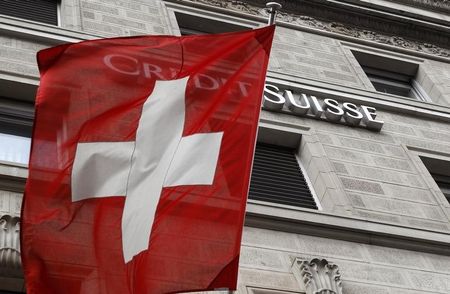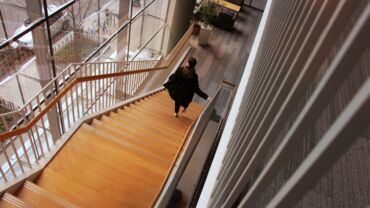On September 28, 2018, both houses of the Swiss Parliament (i.e., the Council of States and National Council) adopted an amended version of the Tax Proposal 17 (TP17) measures, via the Federal Law on Tax Reform on AHV Funding (TRAF). TRAF ends various cantonal corporate tax privileges for Swiss holding (or domiciled) companies, but introduces patent box and research and development (R&D) incentives that align with the OECD’s “modified nexus” approach under BEPS Action 5.
According to the final BEPS Action 5 report, the nexus approach allows a taxpayer to benefit from an intellectual property (IP) regime only to the extent that the taxpayer itself incurred qualifying R&D expenditures that gave rise to the IP income. “The nexus approach uses expenditure as a proxy for activity and builds on the principle that, because IP regimes are designed to encourage R&D activities and to foster growth and employment, a substantial activity requirement should ensure that taxpayers benefiting from these regimes did in fact engage in such activities and did incur actual expenditures on such activities.”
The patent box regime would be in a new Article 24b of the Swiss Tax Harmonization Act (StHG), and would reduce Swiss cantonal corporate income tax rates on profits derived from patents (and similar IP rights) by 90%.
Article 24b(4) of the StHG says that the Federal Council (a seven-member executive council of the Federal government) would issue guidance on the following aspects of the patent box regime, among others:
- The formula for calculating deductible net profits from qualifying patents.
- Application of the regime to patents (and similar rights) that derive from the original qualifying patents.
- Documentation requirements.
- Treatment of losses under the regime.
Editor’s Note: TRAF also introduces cantonal notional interest deduction (NID) rules in a new Article 25a of the StHG on deducting qualifying excess equity financing payments, which are not covered below.
Unless 50,00 voters request a public referendum within 100 days of TRAF’s publication in the official gazette, the patent box regime would apply from January 1, 2020. If a public referendum occurs, TRAF’s entry into force may be delayed.
Legislative History
On June 5, 2015, the Swiss Federal Council released the draft bill of the Swiss Corporate Tax Reform III (CTR III), which included a proposed “license box” regime for cantonal (but not federal) tax purposes, granting preferential treatment for revenue from patents and similar rights associated with R&D that would align with the OECD BEPS Action 5 “modified nexus” approach.
The proposed Swiss license box regime would have resulted in beneficial tax treatment of IP income, with a maximum tax base reduction of 90%, resulting in an effective total tax rate of 8.5 to 10% for qualifying IP income.
On June 17, 2016, the Swiss Parliament adopted the CTR III measures. The license box measures were scheduled to enter into force from January 1, 2019; however, they were rejected in a public referendum held on February 12, 2017.
Following the referendum, on February 22, 2017, the Swiss Federal Council announced that it had instructed the Swiss Federal Department of Finance (FDF) to prepare a new corporate tax reform by mid-2017.
On April 10, 2017, the Swiss Federal Council issued a press release, saying that a steering body, which includes members of the Swiss Confederation and cantons, completed the first round of hearings on TP17.
On June 1, 2017, the Swiss Federal Council issued a press release on TP17. The steering body adopted recommendations on TP17 in an effort to implement a new corporate tax reform proposal. The objectives of TP17 include making Switzerland an attractive business location, achieving international acceptance, and increasing tax revenue. One of the recommendations of the steering body included the introduction of a mandatory patent box incentive regime at the cantonal level.
On June 9, 2017, the Swiss Federal Council discussed the tax policy reform agenda and adopted the parameters for TP17. It instructed the FDF to submit a TP17 consultation draft to it by September 2017.
On September 6, 2017, the Swiss Federal Council announced a public consultation on TP17, which included the proposed legislation and corresponding explanatory report. The consultation included the following patent box proposals:
- Patent box incentive regime (mandatory), with profits from patents and similar rights taxed at a lower Swiss rate based on the OECD’s “modified nexus” approach.
- Additional R&D deductions (voluntary) of up to 50% of qualifying domestic expenditures.
Tax relief from patent box and additional R&D deductions would not be allowed to exceed 70 percent of taxable profits, which would include amortization based on the previous Swiss special cantonal tax regimes.
On March 21, 2018, the Federal Council announced that they adopted the TP17 proposals.
On June 7, 2018, the Swiss Council of States (upper house of Parliament) debated the TP 17 proposals adopted by the Federal Council on March 21, 2018. No changes were made to the patent box and R&D incentive proposals.
On September 12, 2018, the Swiss National Council (lower house of Parliament) approved the TP17 proposals.
Click here for more information on our BEPS research and technology solutions to address your immediate and ongoing needs.









